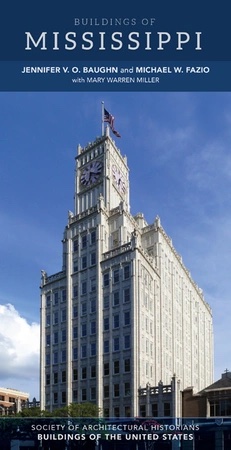
Mount Locust is one of the two oldest buildings in the state and was standing by 1785 when a surveyor depicted the house on a map of William Ferguson’s property. It was both a family home and a stand, or inn, for travelers on the Natchez Trace. The house began as a single room with three galleries; the ends of the rear gallery were originally enclosed with cabinet rooms. By the early nineteenth century the house had expanded to its present size, but it was updated c. 1840 with Greek Revival millwork. The house exhibits most of the characteristics of eighteenth-century architecture in the region. It is raised on wood stumps and has a broken-slope roof flanked by exterior end chimneys. A gallery supported by chamfered posts shelters the asymmetrical facade. Typical early details include wide, beaded siding, hand-wrought or rose-headed nails, batten doors, strap hinges, and interior walls finished in tongue-and-groove boards. The National Park Service acquired the house from the family in 1937, and its restoration was overseen by architectural historians Henry Judd and Charles E. Peterson.

